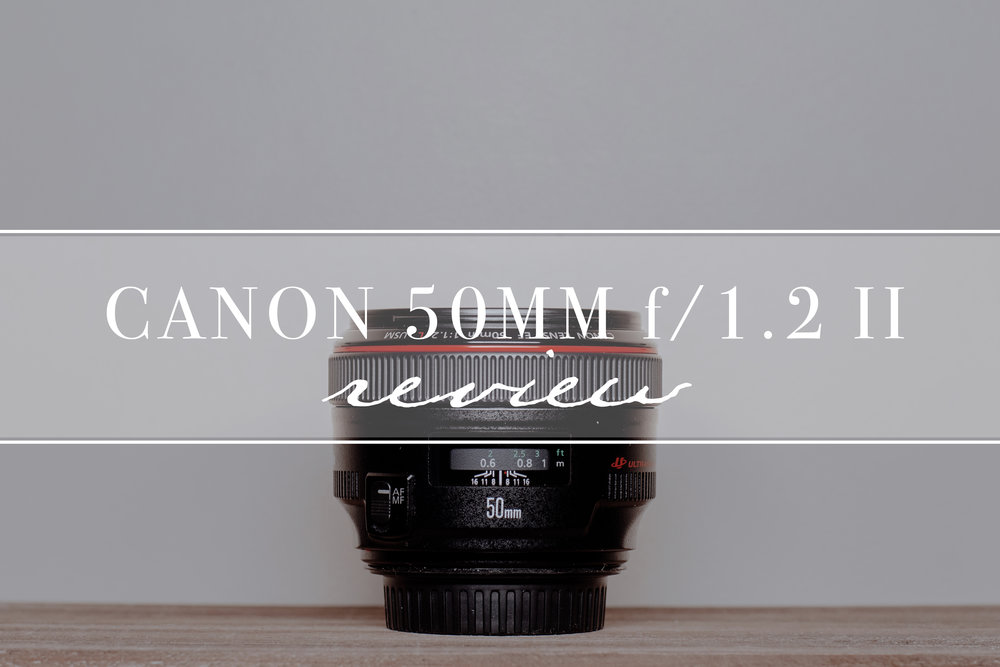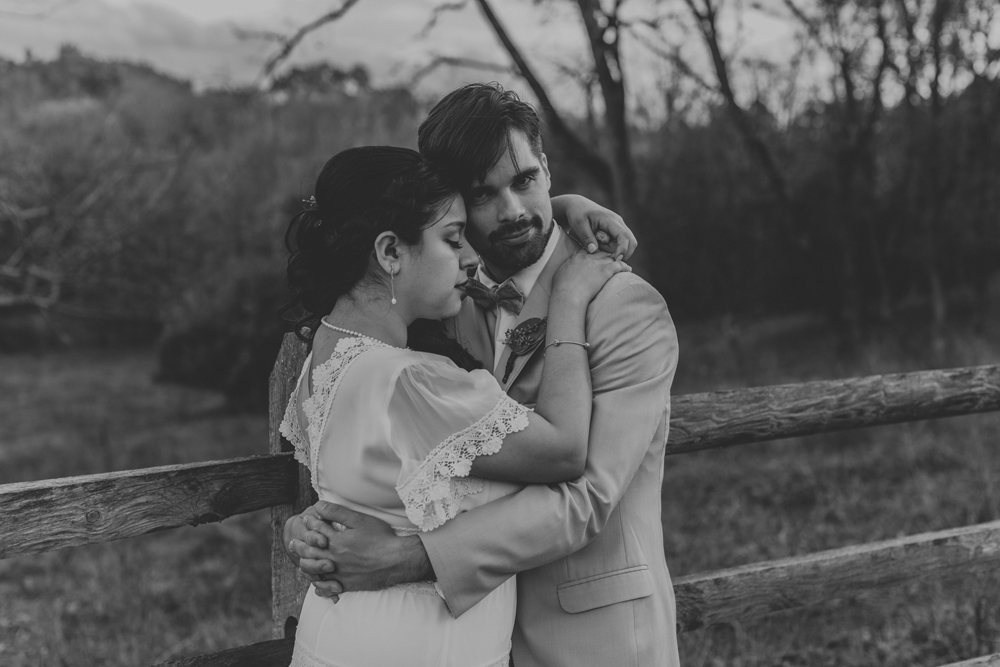
Hands down, the Canon EF 50mm f/1.2 L USM camera lens is an essential in just about every photographers toolkit.
The 50mm focal length has long been one of our personal favorites.

Much of our early photography growing up was centered around a 50mm kit lens that came along with more inexpensive, beginner camera bodies like the Canon Rebel. Even as we expanded our business, the quality of even the kit 50mm lens (this one being the Canon EF 50mm f/1.8 STM lens) was actually impressive, and led to us utilizing it as we grew our collection of lenses until we finally decided to upgrade to the Canon EF 50mm f/1.2 L USM. With that said, we do still keep the old “nifty fifty” (as it is called…) around in case we have a unique instance we want to shoot with it.
As a general statement, the 50mm is one of our favorites mostly due to the flexibility it provides when shooting. Most other lenses have their own value to add to a shoot. Wide angle lenses like a 24mm are excellent for capturing environments and large scenes (and in our own use cases – sometimes capturing some really unique, albeit contorted, portraits) – but that contortion + amount of information being absorbed by shooting with a wide angle is sometimes too much. On the other side of things, longer focal lengths like the 85mm, 135mm, or 70-200mm zoomable lens (all of which we regularly use) have beautiful image quality, but in some scenarios can be too tight to work with depending on the space. Not to mention, the longer the focal length, the farther you have to be from your subject – which doesn’t mesh well with our style of photography when capturing couples or family portraits.
Still, there has to be a significant reason to want to make the jump from a kit lens that is $125 to jumping to a Canon prime lens that runs around $1,300. We’re here to give you a breakdown on the value it adds for us, in particular in how it compares to that much more inexpensive lens.
Comparison: Canon EF 50mm f/1.2 L USM lens vs. Canon EF 50mm f/1.8 STM lens
Aside from the already mentioned difference in price, there are a few obvious differences just from a spec point of view (we promise not to bore you too much here!). Anyone who looks at the lenses and holds them side by side will notice that the nifty fifty feels like a child’s lens when compared with the EF 50mm f/1.2. In terms of sheer size (it’s double or triple the size just looking at them) and weight (one of these is light, one of these is heavy, can you guess which is which?). These are not necessarily indicators of quality, but the larger lens and weightier feel gives the impression that there is more going on in the more expensive lens – which is too be expected.
Of course, in terms of the actual apertures, they are actually fairly similar – though the more expensive lens provides a few additional stops lower at f/1.2 vs. the f/1.8. Still, any respectable photographer would be able to manage more than well with an f/1.8 aperture lens.
Where the lenses really start to diverge from another is in the outputted quality of the image. It is sometimes difficult to get really uniform and controlled sample images of the same subject – especially when shooting naturally (so no indoor, well controlled, studio space). We rarely shoot photos like this, so it does not really suit us to know all that much about the difference in photo quality in perfectly controlled situations – if you are looking for information like that you may consider giving Light & Matter’s lens comparison a read through. Our opinion of the quality then is viewed by comparing photos we have taken using both lenses, and based on what we have read about the performance of each – particularly prior to buying the Canon EF 50mm f/1.2 L USM lens.
In general, we do not think anyone would argue that the nifty fifty outputs a bad image quality. Let’s get that out of the way. Out of all the kit lenses out there, it is probably one of the best – a really shining example of how photography can be done on a budget even without thousand dollar lenses. As photographers for years, this was a valuable tool for us.
Our decision to upgrade came as a direct result of starting to produce photographs as a business. There is a combined mixture of personal and professional reasons for wanting to upgrade – specifically a want to be competitive with other photographers on image quality. Obviously, this sort of sentiment comes with a lot of subjectivity, as the quality of an image is not just defined by photo sharpness, outputted color, bokeh quality, etc. – it can just as well be a technically imperfect photo, but excellent timing or artistic composition. Still, for the sake of argument, we’re going to make the assumption that people looking for photographs of themselves probably (whether they realize it or not) want high quality images that are, in fact, technically as good as possible. This is made even more true when charging professional level prices for the work – as no doubt it is easier to find photographers with budget lenses than photographers with more expensive glass such as the Canon EF 50mm f/1.2 L USM lens.

In direct comparison, there is no doubt that the Canon EF 50mm f/1.2 L USM lens is sharper than the kit lens. Shortly after upgrading, we took a comparison of some of the photos we took with the new fancy lens, and it is apparent how much the image clarity is impacted. We should note – this is using the lenses on the same camera bodies (Canon 5D Mark III and Canon 5D Mark IV). While we have read that the sharpness on the edges of the images is not particularly great on even the prime lens, it should go without saying (but we’ll say it anyways), a 50mm lens is traditionally used for portrait type photography where often the focus of the image is on the center of the frame (or just left/right of center but not far off in the fringes). With enhanced clarity and sharpness in the center, such as over a subjects eye, it becomes obvious to us that the value of this lens + the significantly added cost comes in this simple example of enhanced image quality.
Another important aspect of the images quality is in the resulting bokeh. While both lenses produce good bokeh, the f/1.2 is much better. Even more surprising is how it handles being used wide open at f/1.2 – whereas the kit lens often does not perform well (muddy, blurry images) at it’s most open f-stop of f/1.8 – instead requiring us to often use something more like f/2.8 or greater to capture usable images. Sure, it’s possible some of this could be corrected by taking images slower, not moving the camera as much or putting it on a tripod – but again, this isn’t really the way we work. Most of our sessions are action packed, with a lot of snaps of the camera shutter going off so we can capture the moments-between-the-moments.
In saying this, one concern we had when purchasing the Canon EF 50mm f/1.2 L USM lens based on reviews we had read prior was that it would have difficulty focusing (or take a long time), thus not being good for action shots or event photography. Based on our experience, we have not experienced anything debilitating like this as a result of the lens.
At it’s core, both lenses are good. For professionals, the f/1.2 lens should be preferred if budgetable. The difference is definitely noticeable to our eyes, though might not be so much to someone who hasn’t really looked at too many images and the gear being used to produce them.
Final Verdict of the Canon EF 50mm f/1.2 L USM lens
Overall, there has been a noticeable difference in quality and performance since upgrading from the nifty fifty to the prime version of this Canon 50mm lens. The major deciding factor for you might just well be the cost, as no doubt jumping from a hundred dollar lens to a thousand dollar lens is a big investment. You might have good, maybe even comparable, performance from a mid-price ranged Sigma 50mm if you are open to going “off brand.” If placed again in a situation to buy a new 50mm, we would go again with the Canon EF 50mm f/1.2 L USM lens because it has proven itself to be valuable to our photography.